
Paradise Found: The Tranquil Beauty of Sint Michiel
Discover Sint Michiel, a serene village in Curacao known for its stunning bay, rich history, and vibrant marine life. Perfect for nature lovers, history enthusiasts, and those seeking relaxation.
Nestled on the western coast of Curacao, Sint Michiel is a hidden gem that offers a serene and picturesque escape from the hustle and bustle of everyday life. This charming village, also known as Boca Sami, boasts stunning coastal views, crystal-clear waters, and a rich cultural history that invites visitors to explore and unwind. The heart of Sint Michiel is its beautiful bay, a favorite spot for both locals and tourists alike. Here, you can take a leisurely swim, snorkel among vibrant marine life, or simply relax on the sandy shores while soaking up the sun. The nearby salt flats are home to a variety of bird species, including the iconic flamingos, making it a perfect location for nature enthusiasts and photographers. History buffs will appreciate the remnants of the old Dutch fort that once guarded the bay, offering a glimpse into the island’s colonial past. The village's quaint streets are lined with colorful houses and local eateries where you can savor traditional Curacaoan cuisine, including fresh seafood and the famous keshi yena. Whether you're seeking adventure, relaxation, or a taste of local culture, Sint Michiel provides a captivating blend of natural beauty and authentic experiences. It's a destination that promises unforgettable memories and a true sense of tranquility.
Local tips in Sint Michiel
- Visit early in the morning or late afternoon to avoid the midday heat and enjoy the best light for photography.
- Bring snorkeling gear to explore the colorful underwater world at the bay.
- Wear comfortable walking shoes if you plan to explore the salt flats and birdwatch.
- Try the local seafood dishes at small eateries for an authentic taste of Curacao.
- Take a guided tour to learn more about the history and cultural significance of the old Dutch fort.
Paradise Found: The Tranquil Beauty of Sint Michiel
Nestled on the western coast of Curacao, Sint Michiel is a hidden gem that offers a serene and picturesque escape from the hustle and bustle of everyday life. This charming village, also known as Boca Sami, boasts stunning coastal views, crystal-clear waters, and a rich cultural history that invites visitors to explore and unwind. The heart of Sint Michiel is its beautiful bay, a favorite spot for both locals and tourists alike. Here, you can take a leisurely swim, snorkel among vibrant marine life, or simply relax on the sandy shores while soaking up the sun. The nearby salt flats are home to a variety of bird species, including the iconic flamingos, making it a perfect location for nature enthusiasts and photographers. History buffs will appreciate the remnants of the old Dutch fort that once guarded the bay, offering a glimpse into the island’s colonial past. The village's quaint streets are lined with colorful houses and local eateries where you can savor traditional Curacaoan cuisine, including fresh seafood and the famous keshi yena. Whether you're seeking adventure, relaxation, or a taste of local culture, Sint Michiel provides a captivating blend of natural beauty and authentic experiences. It's a destination that promises unforgettable memories and a true sense of tranquility.
When is the best time to go to Sint Michiel?
Iconic landmarks you can’t miss
Queen Emma Bridge
Discover the charm of Queen Emma Bridge, a floating landmark in Willemstad, connecting cultures and offering stunning views of Curaçao's vibrant waterfront.

Kokomo Beach
Discover the beauty and vibrancy of Kokomo Beach, a top tourist attraction in Curaçao offering relaxation, adventure, and stunning Caribbean views.

Hato Caves
Explore the captivating Hato Caves in Curaçao, home to stunning limestone formations, rich history, and an unforgettable underground adventure.
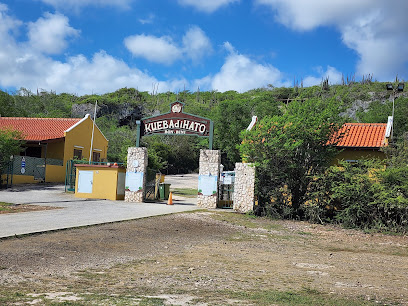
Old Market
Explore Old Market in Willemstad for a vibrant blend of local culture, historical charm, and delicious culinary experiences.
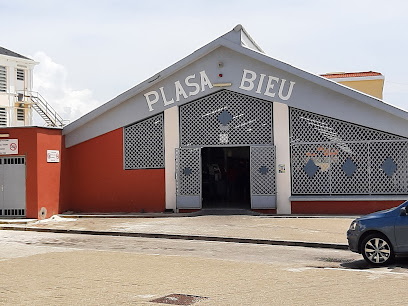
Blue Bay Beach
Discover the stunning Blue Bay Beach in Curaçao, where pristine sands meet crystal-clear waters for the ultimate Caribbean getaway.

Brión Square
Experience the vibrant culture and captivating beauty of Brión Square in the heart of Willemstad, Curaçao, where history and modern life intertwine.
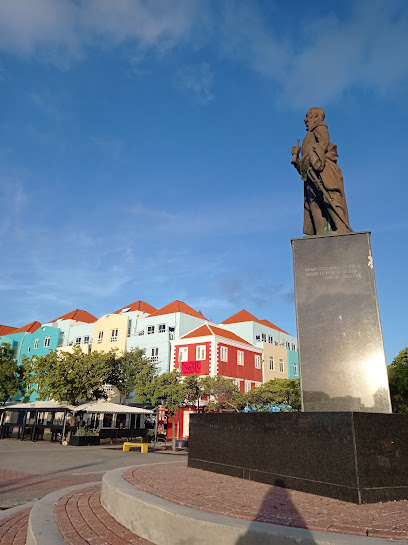
Museum Kura Hulanda
Discover the vibrant heritage of Curaçao at Museum Kura Hulanda, a historic hub showcasing the island's rich cultural tapestry and complex history.

The Niffo Huts
Experience the vibrant flavors of Caribbean cuisine at The Niffo Huts, a top dining destination in Sint Michiel, Curaçao.
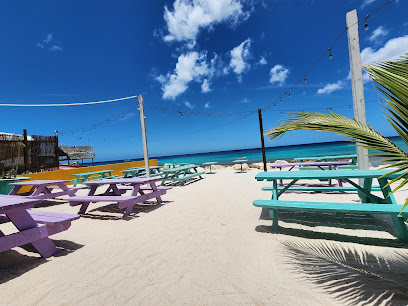
The Curaçao Museum
Explore the captivating history and culture of Curaçao at The Curaçao Museum, a must-visit destination in Willemstad.

Blue Bay, Curaçao
Explore the stunning Blue Bay in Curaçao, a tropical beach paradise offering crystal-clear waters, vibrant marine life, and unforgettable sunsets.

Curacao Maritime History Museum / A treasure chest full of history
Explore the captivating maritime history of Curacao at the Curacao Maritime History Museum, where seafaring tales come to life through engaging exhibits and artifacts.

Aquafari
Discover the vibrant marine life of Curaçao with Aquafari, a premier scuba tour agency offering unforgettable underwater adventures in a tropical paradise.

Curaçao Sign
Explore the iconic Curaçao Sign in Willemstad, a colorful landmark that embodies the spirit of the island and offers stunning photo opportunities.

Forti Boka Sami
Discover the flavors of Curaçao at Forti Boka Sami, a vibrant restaurant offering fresh seafood and local dishes amid stunning island views.

Curaçao Rif Mangrove Park
Explore the lush ecosystems of Curaçao Rif Mangrove Park, a serene nature preserve showcasing the beauty and diversity of Caribbean wildlife.

Unmissable attractions to see
Queen Emma Bridge
Experience the charm of Willemstad at the Queen Emma Bridge, a stunning floating bridge connecting Punda and Otrobanda with breathtaking views.

Mambo Beach
Discover the vibrant energy of Mambo Beach in Willemstad, Curaçao, where sun, sand, and fun come together in a perfect tropical getaway.

Cas Abao Beach
Discover the pristine beauty of Cas Abao Beach in Curaçao, where white sands meet crystal-clear waters in a tropical paradise.

Curaçao Sea Aquarium
Explore the vibrant marine life at Curaçao Sea Aquarium, a top tourist attraction in Willemstad, showcasing the wonders of the Caribbean Sea.

Kokomo Beach
Discover the beauty of Kokomo Beach in Willemstad, Curaçao, a tropical paradise featuring pristine sands, crystal-clear waters, and vibrant beach life.

Landhuis Chobolobo
Experience the rich heritage and vibrant flavors of Curaçao at Landhuis Chobolobo, home of the famous Blue Curaçao liqueur.

Grote Knip
Discover the stunning beauty of Grote Knip, a top beach destination in Curaçao, featuring pristine sands, crystal-clear waters, and vibrant marine life.

Hato Caves
Discover the captivating underground world of Hato Caves in Willemstad, Curaçao, where stunning limestone formations tell a story of ancient geological wonders.

Playa Grandi
Explore the serene Playa Grandi in Sabana Westpunt, a stunning beach known for snorkeling, sunsets, and a unique taste of Curaçao's natural beauty.

Christoffel National Park
Discover the breathtaking landscapes, vibrant wildlife, and rich history of Christoffel National Park in Curaçao, a paradise for nature lovers and adventurers.

Playa Lagun
Experience the beauty of Playa Lagun in Curaçao, where crystal-clear waters and vibrant marine life await your discovery.

Shete Boka National Park
Discover the stunning landscapes and unique wildlife of Shete Boka National Park, a must-visit destination in Curaçao.

Daaibooi Beach
Discover Daaibooi Beach in Curaçao, where soft sands meet crystal-clear waters, perfect for relaxation, snorkeling, and unforgettable Caribbean sunsets.

Brión Square
Discover the vibrant charm of Brión Square in Willemstad, Curaçao, where culture, cuisine, and picturesque views come together.

Museum Kura Hulanda
Explore the rich cultural heritage of the Caribbean at Museum Kura Hulanda, a captivating historical museum in Willemstad, Curaçao.
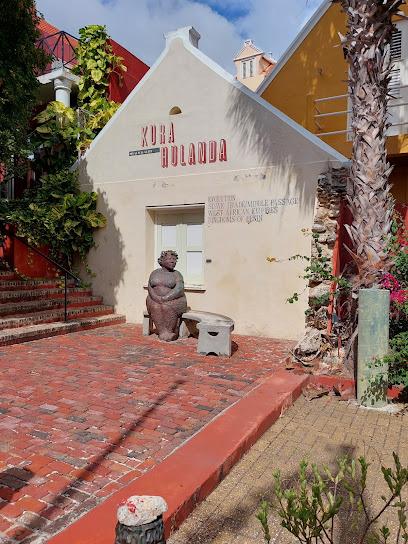
Essential places to dine
De Visserij piscadera
Discover the flavors of fresh seafood at De Visserij in Willemstad—where every bite tells a story of Caribbean culinary excellence.

Pirate Bay Curaçao Beach Club and Restaurant
Discover culinary delights at Pirate Bay Curaçao Beach Club - where stunning ocean views meet exquisite Caribbean flavors.

Restaurant & Café Gouverneur De Rouville
Discover culinary excellence at Restaurant & Café Gouverneur De Rouville in Willemstad - where every meal is paired with breathtaking waterfront views.

La Bohème Curaçao
Discover La Bohème Curaçao: A delightful restaurant offering Caribbean flavors in a vibrant setting—perfect for breakfast, brunch or lunch.

Fort Nassau
Discover exquisite dining at Fort Nassau in Willemstad, where history meets culinary excellence amidst breathtaking Caribbean views.

Kome
Discover Kome in Willemstad: A culinary haven blending local flavors with global cuisine for an unforgettable dining experience.

Eetcafé De Buurvrouw
Discover authentic Caribbean flavors at Eetcafé De Buurvrouw in beautiful Curaçao - where every meal tells a story.

Ceviche 91 gastrobar
Discover Ceviche 91 Gastrobar: A seafood paradise in Curaçao offering fresh flavors and vibrant atmosphere.
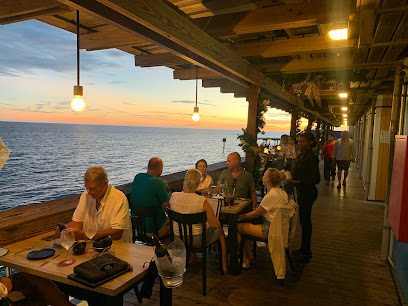
MosaCaña Bar & Kitchen
Experience the vibrant flavors of Curaçao at MosaCaña Bar & Kitchen - where local meets international in an inviting atmosphere.

Dal Toro Restaurant
Experience authentic Italian cuisine at Dal Toro Restaurant in Willemstad, Curaçao – where every dish is crafted with passion and tradition.

Kas di Piskado Purunchi
Experience authentic Caribbean cuisine at Kas di Piskado Purunchi in Willemstad, where fresh seafood meets vibrant island flavors.

The Niffo Huts
Discover authentic Caribbean flavors at The Niffo Huts in Sint Michiel - where delicious cuisine meets vibrant island hospitality.

The Green House
Experience the vibrant flavors of Curaçao at The Green House – where local cuisine meets warm hospitality in Willemstad.

Tomatoes Pizza Curacao
Experience mouthwatering pizzas made with fresh ingredients at Tomatoes Pizza Curacao - a culinary gem in Willemstad!

DiVerse Sauzen Curaçao
Experience authentic Caribbean, Creole & Mexican cuisine at DiVerse Sauzen Curaçao - where every dish tells a story.

Markets, malls and hidden boutiques
Sambil Curacao
Discover the ultimate shopping experience at Sambil Curacao, where diverse shops, delicious dining, and vibrant entertainment await you.

La Curacao
Explore La Curacao in Willemstad for an unforgettable shopping experience filled with local culture and diverse product offerings.

Chichi Shop Punda
Explore the charm of Curacao at Chichi Shop Punda, your go-to souvenir store for unique local crafts and heartfelt treasures.

At Divers Choice Curacao
Discover the vibrant marine life of Curaçao with At Divers Choice Curacao, your ultimate dive shop for unforgettable underwater adventures.

Sweetheart Curacao
Explore Sweetheart Curacao, a captivating toy store in Willemstad, offering an exciting selection of toys and games for the whole family.

Boca Minimarket
Explore Boca Minimarket in Sint Michiel, Curaçao for a wide range of local and international products, perfect for tourists seeking convenience and quality.

Toko Rimon
Explore the tastes of Curaçao at Toko Rimon, your go-to grocery store for local delights and imported favorites.

Freeport Jewelers
Explore Freeport Jewelers for exquisite handcrafted jewelry and exceptional customer service in a vibrant shopping destination.

Nos Logro Minimarket
Explore local flavors and essentials at Nos Logro Minimarket in Sint Michiel, Curaçao, your go-to grocery store for island delights.

JOY by OPRA
Explore the essence of Curaçao at JOY by OPRA, a unique gift shop offering handcrafted treasures and local artistry in the heart of Willemstad.

Island Treasures
Explore Island Treasures in Willemstad for unique souvenirs and local crafts that capture the essence of Curaçao's vibrant culture.

I love Curacao #The hidden beauty of the Caribbean
Explore Curacao's vibrant souvenirs and local crafts at the beautiful Riff Fort, where every item tells a story of the Caribbean.

Britt Shop
Explore the colorful Britt Shop in Curacao Hato International for unique gifts and souvenirs that capture the essence of this vibrant island.

Unique point
Explore Unique Point in Willemstad for stylish men's clothing that blends local charm with contemporary fashion trends.
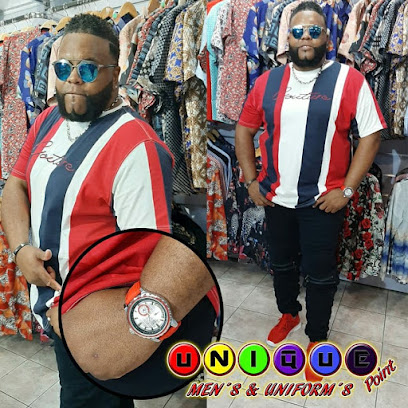
AURA FASHION
Discover stylish women's clothing at AURA FASHION in Willemstad, Curaçao, where fashion meets affordability in a vibrant boutique setting.

Essential bars & hidden hideouts
Pirate Bay Curaçao Beach Club and Restaurant
Experience the ultimate beachside escape at Pirate Bay Curaçao Beach Club and Restaurant, where delicious food and stunning ocean views await.

The Niffo Huts
Experience the vibrant flavors of Curaçao at The Niffo Huts, where local cuisine meets a lively bar atmosphere in Sint Michiel.

DiVerse Sauzen Curaçao
Experience the vibrant culinary traditions of the Caribbean, Creole, and Mexican cuisines at DiVerse Sauzen Curaçao.

The Captain
Experience the vibrant flavors and lively atmosphere at The Captain in Otrobanda, Curaçao, where every meal is a celebration of local culture.

Restaurant X
Discover the taste of Curaçao at Restaurant X, where local flavors and international cuisine create an unforgettable dining experience.

Brass Boer Curaçao
Savor the essence of Caribbean cuisine at Brass Boer, where breathtaking views and exquisite flavors create an unforgettable dining experience.

La Fogata Terrace & Sports Bar
Discover the vibrant flavors of La Fogata Terrace & Sports Bar in Willemstad, where Caribbean hospitality meets a grill lover's paradise.

5 O'clock Somewhere Curaçao
Experience the vibrant atmosphere and delicious Caribbean cuisine at 5 O'clock Somewhere Curaçao, the perfect bar and restaurant for relaxation and fun.

Le Mem Sports Club
Experience the vibrant nightlife at Le Mem Sports Club, a premier sports bar and billiard club in Willemstad, Curaçao, perfect for entertainment and relaxation.

Curadise Bar Restaurant
Experience the vibrant flavors and lively atmosphere of Curadise Bar Restaurant in Willemstad, a perfect tropical retreat.

The World Best Mojito Bar
Experience refreshing mojitos in a vibrant atmosphere at Willemstad's premier cocktail destination, The World Best Mojito Bar.

THE BEER STATION CURACAO
Discover the vibrant culinary scene of Curacao at The Beer Station, a top grill destination in Willemstad offering delicious food and a wide selection of beers.

Blend Beach Bar @ Blue Bay Curaçao Golf & Beach Resort
Experience the vibrant atmosphere of Blend Beach Bar at Blue Bay Curaçao, where delicious cocktails and stunning ocean views await.

HOLIDAY BAR RESTAURANT
Experience the vibrant flavors of Caribbean cuisine at Holiday Bar Restaurant in Sint Michiel, Curaçao, where every meal is a delightful journey.

Frena Pretu Snack
Discover the vibrant flavors of Curaçao at Frena Pretu Snack, a must-visit bar in Willemstad offering authentic local snacks and a relaxed atmosphere.
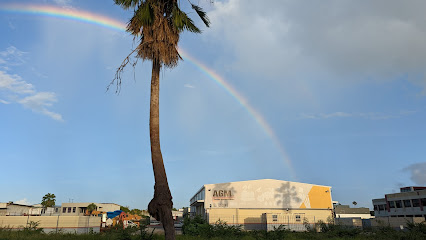
Local Phrases
-
- HelloBon dia
[Bon dee-ah] - GoodbyeAyo
[Ah-yo] - YesSi
[See] - NoNo
[No] - Please/You're welcomePor fabor
[Pohr fah-bor] - Thank youDanki
[Dahn-kee] - Excuse me/SorryDisculpa
[Dees-kool-pah] - How are you?Kon ta bai?
[Kohn tah by] - Fine. And you?Bon. I boso?
[Bon. Ee boh-soh?] - Do you speak English?Bo ta papia Ingles?
[Boh tah pah-pee-ah Ing-lehs] - I don't understandMi no ta kompronde
[Mee noh tah kom-prohn-deh]
- HelloBon dia
-
- I'd like to see the menu, pleaseMi ke mira e menu, por fabor
[Mee keh mee-rah eh meh-noo, pohr fah-bor] - I don't eat meatMi no ta kome karni
[Mee noh tah koh-meh kar-nee] - Cheers!Salud!
[Sah-lood] - I would like to pay, pleaseMi ke paga, por fabor
[Mee keh pah-gah, pohr fah-bor]
- I'd like to see the menu, pleaseMi ke mira e menu, por fabor
-
- Help!Yudami!
[Yoo-dah-mee] - Go away!Bai for di mi!
[Bye fohr dee mee] - Call the Police!Yama polis!
[Yah-mah poh-lees] - Call a doctor!Yama un dokter!
[Yah-mah oon dok-ter] - I'm lostMi ta perdi
[Mee tah pehr-dee] - I'm illMi ta malu
[Mee tah mah-loo]
- Help!Yudami!
-
- I'd like to buy...Mi ke kumpra...
[Mee keh koom-prah] - I'm just lookingMi ta solamente mira
[Mee tah soh-lah-men-teh mee-rah] - How much is it?Kuantu esaki ta kosta?
[Kwan-too eh-sah-kee tah koh-stah] - That's too expensiveEsaki ta masha karo
[Eh-sah-kee tah mah-shah kah-roh] - Can you lower the price?Bo por baha e preis?
[Boh por bah-hah eh preis]
- I'd like to buy...Mi ke kumpra...
-
- What time is it?Kon ora e ta?
[Kohn oh-rah eh tah] - It's one o'clockE ta un ora
[Eh tah oon oh-rah] - Half past (10)Mitad di dies
[Mee-tahd dee dee-ehs] - MorningMarduga
[Mar-doo-gah] - AfternoonTardi
[Tahr-dee] - EveningAnochi
[Ah-noh-chee] - YesterdayAnoche
[Ah-noh-chay] - TodayAwe
[Ah-way] - TomorrowMañana
[Mah-nyah-nah] - 1Un
[Oon] - 2Dos
[Dohs] - 3Tres
[Tres] - 4Cuatro
[Kwah-troh] - 5Cinco
[Seen-koh] - 6Seis
[Sayce] - 7Siete
[See-eh-teh] - 8Ocho
[Och-oh] - 9Nueve
[Nweh-veh] - 10Diez
[Dee-ehs]
- What time is it?Kon ora e ta?
-
- Where's a/the...?Unda ta e...?
[Oon-dah tah eh] - What's the address?Kua ta e adres?
[Kwah tah eh ah-dres] - Can you show me (on the map)?Bo por mustrami (riba e mapa)?
[Boh por moos-trah-mee (ree-bah eh mah-pah)] - When's the next (bus)?Kuando ta e siguiente (bus)?
[Kwan-doh tah eh see-gwee-ehn-teh (boos)] - A ticket (to ....)Un tiki (pa ....)
[Oon tee-kee (pah)]
- Where's a/the...?Unda ta e...?
History of Sint Michiel
-
Before European colonization, the area now known as Sint Michiel was inhabited by the Arawak and Caquetio indigenous peoples. These tribes were known for their fishing, hunting, and rudimentary farming techniques. They left behind petroglyphs and artifacts that provide a window into their way of life.
-
In 1499, Spanish explorers arrived on the island of Curaçao. Though they did not settle the area, they laid the groundwork for future European colonization. The bay of Sint Michiel was first charted during this era, marking it as an important coastal feature.
-
In 1634, the Dutch West India Company took control of Curaçao, including Sint Michiel. The Dutch fortified the area with several defensive structures to protect against potential Spanish attacks. Sint Michiel Bay became a focal point for trade and military strategy.
-
During the 17th and 18th centuries, Sint Michiel became an integral part of Curaçao’s plantation economy. Slaves were brought in to work on plantations that grew crops like indigo and dyewood. The remnants of these plantations can still be seen in the area, including old buildings and machinery.
-
Built in the 18th century, Fort Sint Michiel served as a strategic military outpost to protect the bay from pirates and foreign invaders. Today, it stands as a historical monument, offering visitors a glimpse into the island’s colonial past.
-
During World War II, Curaçao, including Sint Michiel, played a crucial role due to its oil refineries, which supplied fuel to the Allied forces. The area saw an increase in military activity and fortifications to protect against German U-boat attacks.
-
In the late 20th and early 21st centuries, Sint Michiel transformed from a quiet fishing village into a burgeoning tourist destination. The area is now known for its beautiful beaches, diving spots, and the vibrant local culture, while still retaining its historical charm.
-
Sint Michiel is a melting pot of cultures, reflecting Curaçao’s diverse heritage. The local population celebrates various festivals, including the annual Carnival and Dia di Bandera (Flag Day), showcasing traditional music, dance, and cuisine.
Sint Michiel Essentials
-
Sint Michiel is located on the western coast of Curacao, just a short drive from the island's capital, Willemstad. The nearest major airport is Hato International Airport (CUR), which is approximately a 15-minute drive from Sint Michiel. From the airport, you can rent a car, take a taxi, or use a private shuttle service to reach your destination.
-
Getting around Sint Michiel is fairly straightforward. Renting a car is the most convenient option, allowing you the freedom to explore at your own pace. Taxis are also available but can be expensive for long distances. Public buses are an affordable option and connect Sint Michiel to other parts of the island, including Willemstad. Biking is another great way to explore the area, especially the scenic coastline.
-
The official currency in Curacao is the Netherlands Antillean Guilder (ANG), but US Dollars (USD) are widely accepted. Credit cards are commonly used in hotels, restaurants, and larger stores. It is advisable to carry some cash for smaller establishments and local markets. ATMs are readily available in Sint Michiel and throughout the island.
-
Sint Michiel is generally safe for tourists, but standard precautions should be taken. Avoid walking alone late at night and keep an eye on your belongings in crowded areas. Areas near Willemstad have higher crime rates, so exercise caution if venturing into the capital. Always lock your car and do not leave valuables visible inside.
-
In case of an emergency, dial 911 for immediate assistance. The nearest hospital is St. Elisabeth Hospital in Willemstad, approximately 20 minutes away by car. Pharmacies are available in the area for minor health issues. It is advisable to have travel insurance that covers medical emergencies and to carry a copy of your insurance policy.
-
Fashion: Do dress casually but respectfully. Swimwear is appropriate at the beach but should not be worn in town. Religion: Do respect local customs and traditions. Dress modestly when visiting religious sites. Public Transport: Do be courteous to fellow passengers and the bus driver. Don’t eat or drink on public buses. Greetings: Do greet people with a friendly 'Bon Bini' (welcome) or 'Kon ta bai?' (how are you?). A handshake is also common. Eating & Drinking: Do try local dishes like 'keshi yena' and 'pastechi.' Don’t refuse a meal if invited to someone's home; it is considered impolite.
-
To experience Sint Michiel like a local, visit the local fish market early in the morning to see fishermen bringing in their catch. Try snorkeling or diving at the nearby Blue Bay, known for its vibrant marine life. Engage with locals, who are often happy to share stories and tips about the area. Don’t miss the opportunity to explore the nearby salt pans and flamingo sanctuary for a unique natural experience.
Trending Landmark in Sint Michiel
Nearby Cities to Sint Michiel
-
Things To Do in Julianadorp
-
Things To Do in Willemstad
-
Things To Do in Barber
-
Things To Do in Soto
-
Things To Do in Sabana Westpunt
-
Things To Do in Westpunt
-
Things To Do in San Nicolas
-
Things To Do in Savaneta
-
Things To Do in Santa Cruz
-
Things To Do in Pos Chiquito
-
Things To Do in Paradera
-
Things To Do in Sero Blanco
-
Things To Do in Tanki Leendert
-
Things To Do in Oranjestad
-
Things To Do in Noord







